
‘Although its centre was Paris, the cinematic avant-garde that emerged after World War I originated in Germany. Composed almost exclusively of modern painters and photographers, the international experimental film movement mounted a sustained effort to extend the formal strategies of the various strands of post-war modernism to the cinema. In deliberate opposition to the naturalizing, indexical tendencies of the popular cinema, the highly reflexive films of the first avant-garde emphasized the medium-specific properties of cinema by drawing attention to its capacity for spatio-temporal transformation. The focus was on the nature, properties and functions of the camera, film strip and screen, rather than on human actors or narrative flow. It is, therefore, highly appropriate that the films that inaugurated the movement were all works of abstract animation, an area in which German artists made a decisive contribution. Foremost among these early pioneers was Hans Richter, who, as a participant in most of the major art movements of the inter-war period and as a director, educator, theorist and cine-activist for more than four decades, played a pivotal role in the development of the avant-garde film.
‘After a brief career as a Cubist and six months of military service, Richter became, with Tristan Tzara and Hans Arp, one of the founding members of Zurich Dada. As the acknowledged author of many of the Dada manifestos, Richter was certainly sympathetic to its ideas, but his paintings in this period are less concerned with anarchic revolt than they are with the dissolution of natural objects into pure forms. Following the failed Spartacist uprising, Richter returned to Munich in 1919 to lead the short-lived Action Committee of Revolutionary Artists. Richter quickly turned away from politically charged figurative art, however, and devoted his energies to the development of a new system of rhythmic abstraction. Some scholars have interpreted Richter’s growing interest in non-representational forms as a response to the failure of leftist groups such as the Action Committee to affect political change. Richter, however, reads things differently:
“Influenced by cubism and its search for structure, but not satisfied with what it offered, I found myself between 1913-1918 increasingly faced with the conflict of suppressing spontaneous expression in order to gain an objective understanding of a fundamental principle with which I could control the ‘heap of fragments’ inherited from the cubists. Thus I gradually lost interest in the subject – in any subject – and focused instead on the positive-negative (white-black) opposition, which at least gave me a working hypothesis whereby I could organize the relationship of one part of a painting to the other.”
‘Richter’s preoccupation with the relationship between structural elements reflects his desire to move past the individualistic emotionalism of Expressionism by finding some way to harness, and exert dialectical control over, the flow of abstract form-combinations in his work. Ironically, one of the founders of Dada quickly became concerned that “if we allow […] an uninhibited fulfilment of all personal impulses without, at least, trying to establish harmony we are led to anarchy and suicide in life as well as in art”, and began searching for universal principles that could be used “so that we might attain a sovereignty over this new matter and justify this new freedom”.
‘Late in 1919, Richter met the Swedish artist Viking Eggeling, who was similarly concerned with systematizing abstraction. The two artists began living and working together, finding in the counterpoint of Johann Sebastian Bach’s fugues a principle that could be used to control both the form and the rhythm of their paintings. For Richter and Eggeling, contrapuntal polarity “was more than a technical device, it was a philosophic way of dealing with the experience of growth” and it led them to the idea of a universal language. Although no copies survive, in 1920 they jointly published an article on this subject, entitled “Universelle Sprache” (“Universal Language”), in Theo van Doesberg’s magazine, De Stijl, in 1920. The essay demonstrated how an unlimited multiplicity of relationships could be arranged by equilibrating form-elements with their opposites through similarities that they called “contrast-analogies”. In a series of scroll paintings they made between 1919 and 1921, Richter and Eggeling took their ideas further by introducing the idea of continuity to the methodical arrangement of their contrast-analogies. Since the scrolls progress sequentially, the dynamic energies of the form-element relationships are able to accumulate, allowing the viewer to experience the work not as a static fact, but rather as an active process unfolding in time. Richter and Eggeling both saw utopian possibilities in the mnemonic demands their scroll paintings placed on the eye, and this inspired them to try to apply their principles to the time-based medium of film.
‘Although neither Richter nor Eggeling had any experience with film technology, they were able to begin experimenting in the trick film studios of UFA in Berlin through the patronage of a wealthy neighbour. After several failed attempts to directly transfer their scrolls to strips of film, Richter and Eggeling tried to animate hand-drawn images by holding them down with thumbtacks and manually moving them on an editing table. Richter successfully adapted his 1919 Präludium scroll into a brief sequence, but became frustrated at the cumbersome production process and the somewhat awkward results. Increasingly convinced that their techniques were inadequate to the task, Richter abandoned this method in late 1920, which precipitated a falling out with Eggeling, who insisted that picture scrolls should be treated as “scores” for films. After what Richter has called a “Herculean effort”, Eggeling was eventually able to complete the final version of his Symphonie Diagonale shortly before his death in 1925.
‘Richter, on the other hand, decided to adopt an entirely new strategy: rather than attempting to visually orchestrate formal patterns, he focused instead on the temporality of the cinematic viewing experience by emphasizing movement and the shifting relationship of form elements in time. His major creative breakthrough, in other words, was the discovery of cinematic rhythm, which he then used as the title of his first film, Film ist Rhythmus: Rhythmus ’21 (Film is Rhythm: Rhythm 21, 1921). For Richter, rhythm, “as the essence of emotional expression”, was connected to a Bergsonian life force:
“Rhythm expresses something different from thought. The meaning of both is incommensurable. Rhythm cannot be explained completely by thought nor can thought be put in terms of rhythm, or converted or reproduced. They both find their connection and identity in common and universal human life, the life principle, from which they spring and upon which they can build further.”
‘In one of his final essays, Richter observed that the “pure cinema” has three characteristics that determine its place in twentieth-century society: the freedom of the artist; the moral responsibility of film content; and the value of the obscure. Although all three of these criteria are inter-related, they also delineate, roughly, three of the major stages of the history of the international avant-garde cinema: the initial assertion of cinematic independence (1921-9); the turn towards a more politicized use of the documentary form in the 1930s; and finally the emergence of the romantic, “visionary” New York-based avant-garde of the 1940s and 1950s. Having played a pivotal role as an activist during the first two stages, Richter’s major contribution to the third was as an educator. As the first director of the Film Institute of the City College of New York from 1942 to 1957, he taught, befriended and supported such seminal members of the New American Cinema as Maya Deren, Jonas Mekas and Shirley Clarke. As significant as his publications, paintings and organizational activities were, however, his primary achievement was the creation of nearly a dozen independently controlled films. Having affirmed the formal integrity of the screen as a flat surface in his first film, he ended his career with a set of oneiric feature-length films (Dreams that Money Can Buy, 8×8 and Dadascope) that emphasized the revelatory potential of the irrational and the subconscious depths of the human psyche. In moving between these two poles, Richter’s film corpus mirrors, in microcosm, the dominant historical trajectory of the avant-garde film.’ — Senses of Cinema
___
Stills
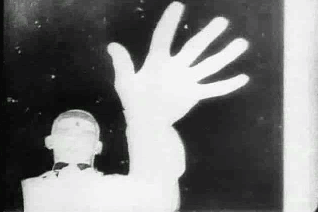
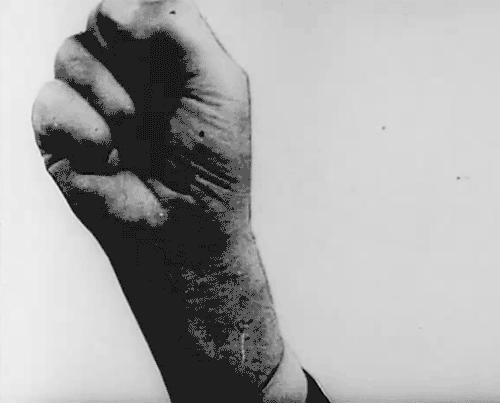
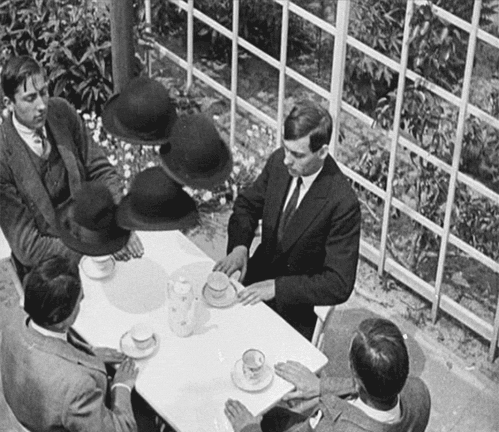




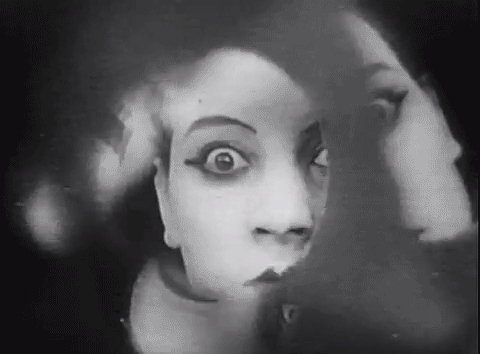

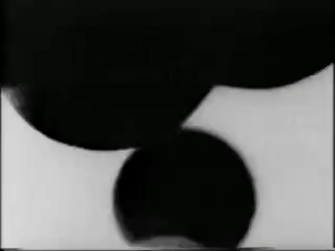

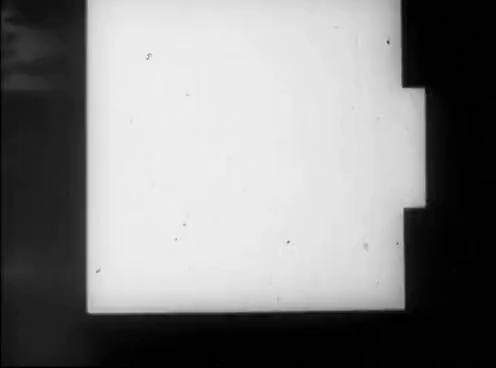
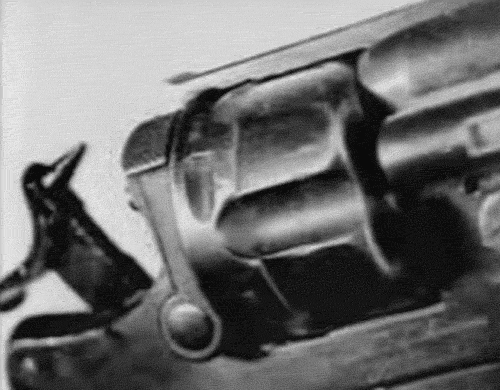

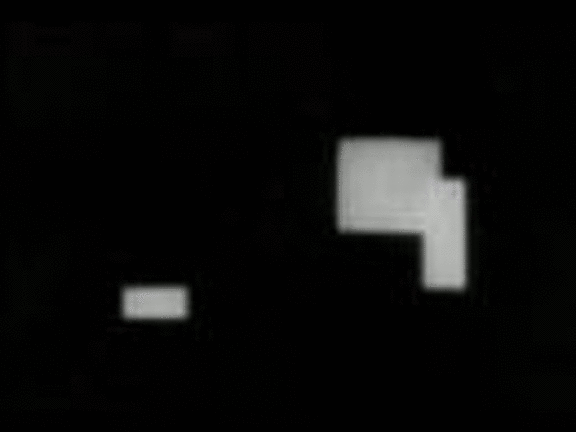
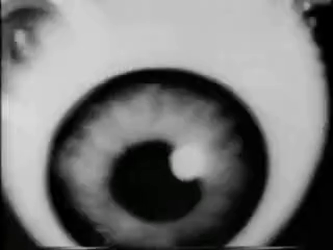
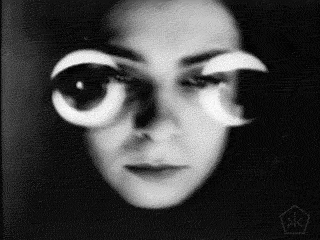
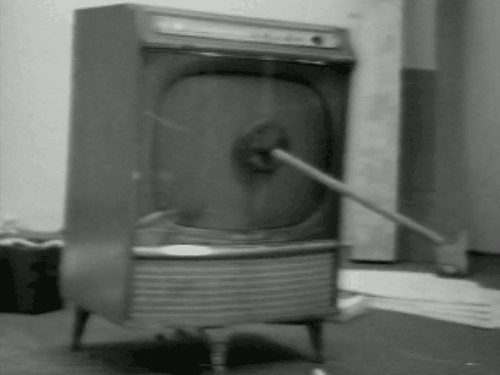
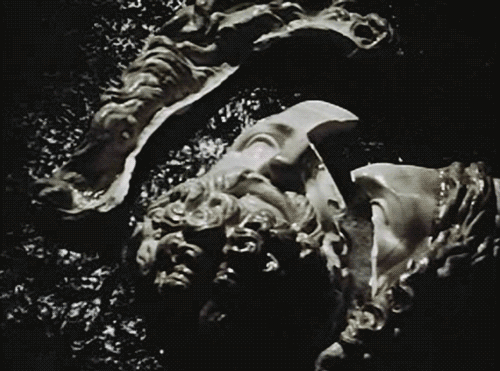
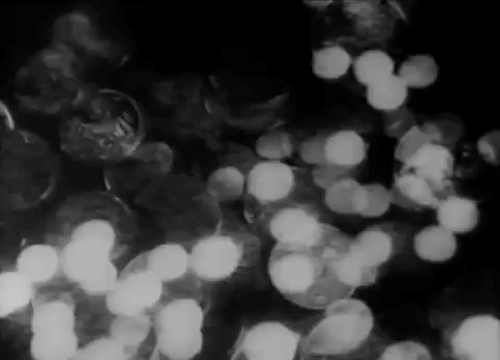

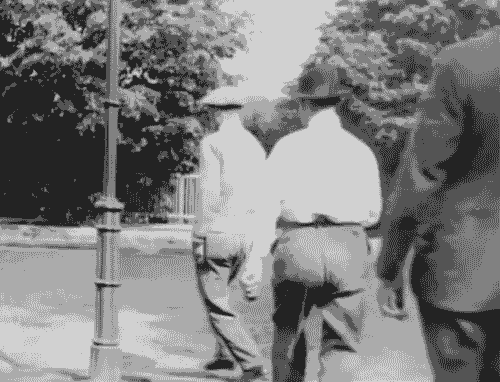
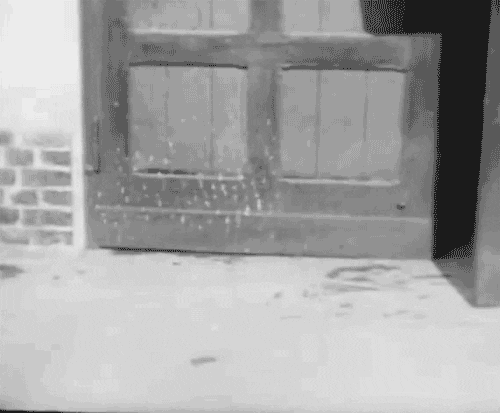
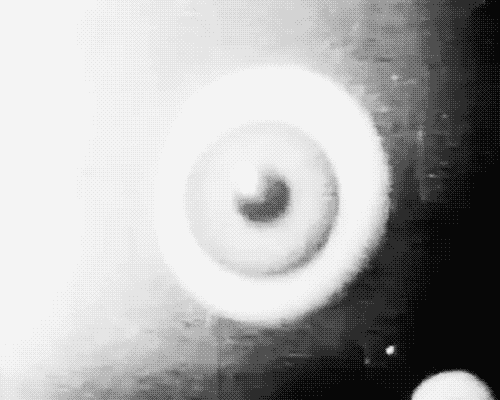

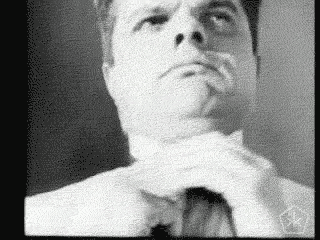

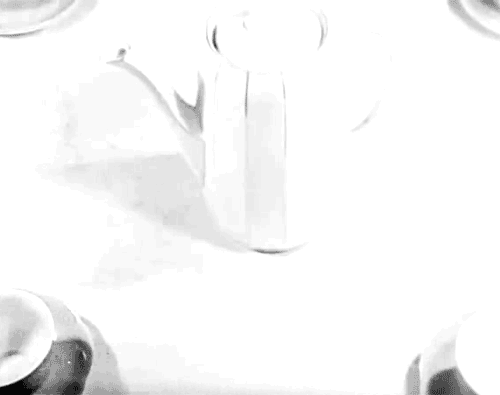


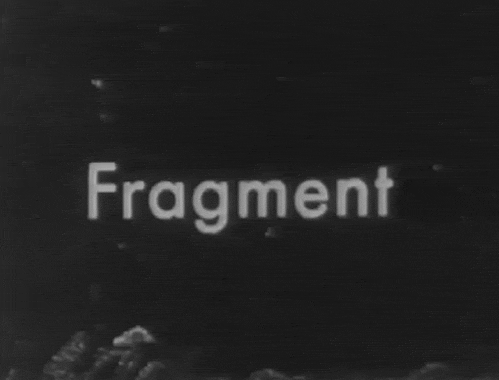
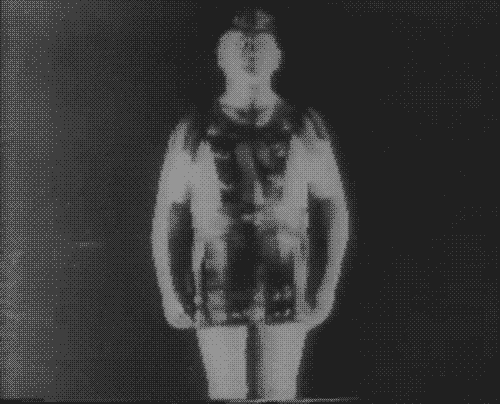


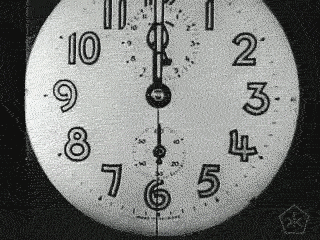
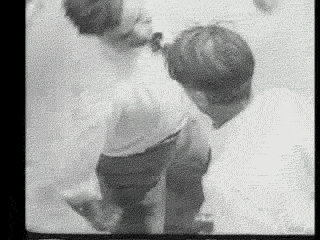

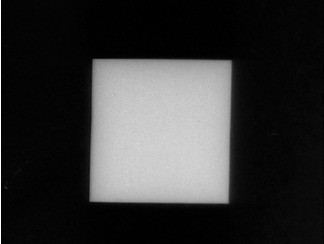

___
Further
Hans Richter @ Senses of Cinema
Hans Richter @ Wikipedia
Rescoring Richter
Hans Richter @ Re:Voir
Hans Richter @ Light Cone
Habs Richter @ The Art Story
Hans Richter @ The Film-makers Coop
Book: ‘Hans Richter’ (les presses du réel)
Hans Richter: Anti-Film and Radical Dada Abstraction
Hans Richter, le film et la refonte du système moderne des arts
Hans Richter in Exile: Translating the Avant-Garde
Hans Richter: The Dream of Universal Language and the Birth of The Absolute Film
___
Extras
Hans Richter on Film
The various works of HANS RICHTER
Trailer: ‘Hans Richter: Everything Turns- Everything Revolves’
Hans Richter : expo au Centre Pompidou Metz
____
Quotes

Rhythm
The rhythm of a work is equal to the idea of the whole. Rhythm is the thing that informs ideas, that which runs through the whole: sense = principle, from which each individual work first gets its meaning. Rhythm is not definite, regular succession in time or space, but the unity binding all parts into a whole.
The emotional world, as well as the intellectual, has laws governing its expression. It is much more the inner, nature-force which directly forms and animates ideas, through which we are bound up with the elemental nature-forces.
Just as the path of the intellectual formulating-power leads to thought, as a justifying moment of intellectual activity, so the emotional formulating-power leads to rhythm as the essence of emotional expression. Just as thought gives value to an abstract work so rhythm gives meaning to forms. Abstract activity for its own sake is the same as formal games for their own sake, they can be ingenious or subtle, but in any case they are futile, so long as they do not follow, to a letter, the whole determining impulse.
Rhythm expresses something different from thought. The meaning of both is incommensurable. Rhythm cannot be explained completely by thought nor can thought be put in terms of rhythm, or converted or reproduced. They both find their connection and identity in common and universal human life, the life principle, from which they spring and upon which they build further. The analysis of a rhythm can thus only be undertaken quite generally and comparatively, so long as it does not deal with material construction, with the discipline of building.
Cardboard/Metal
love cardboard.
The cheap corrugated paper, the grey carton lid, the black adhesive tape. Something out of nothing!
That is how creation begins. What is
valueless has value. What is valuable is suspect. Possessions!
Customs admit the cardboard relief. It is valueless, is no possession.
But copper is beautiful, or brass, aluminium, iron. Metal is more intense than cardboard, harder, more glistening, or else more dull. More aggressive. Less yielding.
I love metal.
It resists. It dictates its own rhythm. It shines. It is proud… So very different from the friendlier cardboard which adapts itself willingly to chance, and remains undiscovered.
On Dada
Art historians and critics, not too long ago, discovered Dada. They decided the movement was something like a glorified practical joke that had some useful destructive function at the time.
This definition has now been sanctioned by repetition and has become an “historical fact.” But we who were all together there when it happened look at it from another angle, not from the big noise we made together at the time to “épater le bourgeois” but from the ideas and problems with which we, the artists, were then concerned and which were the bone and flesh, though not necessarily the skin, of this movement. For example, under the name of “New Life” a group of creative Dadaists worked, exhibited and developed until 1922. What we still need is a treatise on the “Dada spirit” that had afforded us a special mental climate: a belief in the purity of man, a source of art welling up from the depths of the subconscious. While it was flabbergasting and mystifying, Dada also succeeded in creating pure poetry. While it was tearing down, Dada also experimented and created the foundations for a new social aesthetic to serve the artist—at least in its last, positive phase. It is a problem which is still awaiting its solution.
Dada will last. Not so much because of the experiments and the literary excesses that gave birth to Surrealism, but rather because of the creation of the prophetic spirit found in the works of Arp, in the poetry and art of Klee, in my scrolls, in the abstract films of Eggeling and me, in the attempts in mural paintings, abstract plastics, mosaics, and in the beautiful tapestries of Sophie Taeuber.
Dada was anything but a hoax; it was a turning on the road opening up wide horizons to the modern mind. It lasts and will last as long as the spirit of negation contains the ferment of the future.
“A Painter Speaks to Painters”
What are we doing to oppose the battles that are raging all over Europe?
Everywhere and continuously—battles, killers, the death of human beings! Is that not our concern? Can anyone say that still-lives, nudes or any paintings, titled in some way or untitled, do anything in opposition?
Art is well established everywhere, and poor suffering men have the right to expect some artist to be the mouth of their soul (the soul of those who are less privileged in their ability to use image and word)—their mouth passionately cries out their pain.
Artists flee from the banality of this simple request. But look at the earth now! THAT is the reality. And testify whether the most banal of our demands is fulfilled and whether the very least IS done according to our sincere convictions.
We torture ourselves for special observations in our own field of work, yet in the end we haven’t even found a safe refuge on earth for our ideas and ideals.
If today we are forced to discard, to overcome, to sublimate, it is not done lightheartedly, for it is not in our character to jump on the bandwagon of heroic sacrifice. No. But if we continue to paint and work in the future without regard (as persons and as artists) to these events, we shall be painting and working for an earth void of spiritual heritage, for an earth of corpses.
Is it possible to be aware of this every day, every night, even though one might not be physically involved in it, and then forget it entirely
If we ever expect to receive the gratitude of present and future generations, we will have to find a way to express human passion. The gratitude of deeply mutilated mankind is something far different from the gratitude of even the most sincere art-lover.
If something exists now in all men, it is the burning pain, disgust and shame of living and participating, at least morally, in such a devastating time even though our “good-will” or “better judgment” might oppose it.
How can we quietly accept the responsibility that everything is so cruel, brutal, devoid of the spiritual values we have cherished all our lives? How can we stand this without exploding in a roar of pain?
_____________
13 of Hans Richter’s 26 films
_____________
Rhythmus 21 (1921)
‘The first experiment of Abstract Cinema. It is a non-narrative-based film, the first of Richter’s “Rhythm” series, developed through the placing of abstract images in a specific order. The film is conceived as a piece of music composed of images instead of sounds.’ — iconauta
the entirety
_____________
Rhythmus 23 (1923)
‘Rhythmus 23 is constructed entirely out of the interplay between square shapes and diagonal lines, often related via superimposition, and the underlying architectonic principle is geometric symmetry. In the opening of the film, for example, two white squares on the left and right sides of the screen move towards each other along an axially symmetric path until they finally “fuse” into a larger white square, before breaking apart into shrinking squares that careen off diagonally, in parallel with one another. At the end of the film, this same sequence re-appears, but this time inverted, with black squares moving against a white background.As a favour to his old friend Tristan Tzara, the film was premiered in Paris during the final Dada soiree on 6 July 1923. This has led many critics to mistakenly read it, and indeed all of Richter’s abstract work as Dada, despite the fact that his writings and films demonstrate a much stronger affinity with the rationalist systemiticity of Constructivism.’ — Richard Suchenski
the entirety
______________
Filmstudie (1926)
‘Hans Richter’s pioneering Dada work Filmstudie was an early attempt to combine Dadaist aesthetics and abstraction. Made in 1926 Richter’s film presents the viewer with a disorientating collage of uncanny false eyeballs, distorted faces and abstract forms… Hans Richter’s pioneering Dada work Filmstudie was an early attempt to combine Dadaist aesthetics and abstraction. Made in 1926 Richter’s film presents the viewer with a disorientating collage of uncanny false eyeballs, distorted faces and abstract forms (none of these themes is treated constantly). It’s similar to Man Ray’s work in its ballet of motion which combines a playful tension between figurative and abstract forms, both in negative and positive exposure. Filmstudie is essentialy a transitional work of mixed styles. A number of devices drawing attention to the technical specificity of photography (multiple exposures and negative images) are also included and enter into a successful fusion with the remaining elements.’ — Marco Milone
the entirety w/ score by Jon Daou
______________
Inflation (1928)
‘A criticism of capitalism using avant-garde means, in keeping with Richter’s argument that “even invisible things must be made visible”. In this experimental collage of animated numbers and documentary images, he shows the increase and devaluation of money, and the winners and losers of inflation during an economic crisis. Within seconds, a wealthy man reading a newspaper becomes a beggar, the zeros on the banknotes multiply – right up until the stock exchange physically collapses.’ — Berlinale
the entirety
_______________
Ghosts Before Breakfast (1928)
‘The hats won’t stay on heads. The bowtie won’t be tied. The gun can’t shoot and the target can’t keep still. When objects themselves rebel, something terrible is upon the land, and anarchism will out. This is one of the takeaways from painter Hans Richter’s 1928 DADA short film Ghosts Before Breakfast, or Vormittagsspuk in its original German (literally “Morning Spook”). And you might take that a very different way than the audience in 1928. That is fine. This is Dada. It is a bomb thrown into the mind.
‘But actual events and problems surround the film and its aftermath. By the end of the 1920s Richter was nearly two decades into his abstract/cubist painting career, and at the beginning of the decade he had already been experimenting with the relatively new medium of film. His 1921 Rhythmus 21 was one of the first films to attempt to bring abstract ideas–shapes, light, rhythm– to the medium. Writing in a German periodical around 1926, he said “…cinema can fulfill certain promises made by the ancient arts, in the realization of which painting and film become close neighbors and work together.”
‘Ghosts has a tragic afterlife: the Nazis burned the original film and the score Hindemith wrote for it. However that has left a flowering of music in its wake, as composers have tried to fill the gap: Ian Gardener, Jean Hasse, the band The Real Tuesday Weld, and others. Steve Roden composed four versions for a LACMA retrospective of Richter’s work, using various Dadaist tactics, including recording a Hindemith vinyl he had prepared with sandpaper.’ — Ted Mills
the entirety
_______________
Race Symphony (1928)
‘Richter’s brilliant gift as an editor in nowhere more evident than in this impressionistic documentary on the preparation and start of a horse race at a track near Berlin. Marked by a sharp pace and an acute visual observation of telling gesture and detail, it is hard to believe that this film was made over 40 years ago. It was produced for Maxim-Emelka, a Berlin studio, as an introductory to the feature film, ARIADNE IN HOPPEGARTEN.’ — Standish D. Lawder
the entirety
___________
Every Day (1929)
‘Every Day was a film that German avant-garde filmmaker Hans Richter made as part of a film production course run by the Film Society. It features filmmaker Sergei Eisenstein playing a policeman, while Len Lye and Basil Wright provided technical assistance. These contributions reflect the sense of internationalism occurring at this time in British film circles. The film was completed in 1929 under the title The Daily Round, but was never released because Richter was unhappy with the result. Richter began to rework the film in 1975, but died before its completion. It was finally restored, with the addition of a soundtrack, after his death.’ — Chris Agg
the entirety
______________
Two Pence Magic (1930)
‘Hans Richter’s Two Pence Magic is an avant-garde advertisement for an illustrated tabloid newspaper (the films title refers to the cost of a newspaper in the 1920’s). Utilizing a technique evident in his previous films, Richter creates a synthetic experience by “rhyming” with images instead of sounds.’ — Walker Art Center
the entirety w/ score by Ben Kammerer
_____________
Die neue Wohnung (1930)
‘A commissioned film for SWB – Schweizerischer Werkbund – Die neue Wohnung was produced for the Basel architectural and interior design exhibition (WOBA) to demonstrate innovative aspects of modern architecture and highlight their differences from the event’s highly conservative approach. Aimed at a bourgeois Swiss public, this version, screened in Basel in 1930, was the outcome of the collaboration between Richter and the members of the SWB, responsible for the script but also for the film’s formal elements, such as a refusal to use animation.’ — Letterboxd
the entirety
_____________
w/ Man Ray, Marcel Duchamp, Alexander Calder & Fernand Léger Dreams That Money Can Buy (1947)
‘“Everybody dreams. Everybody travels, sometimes into countries where strange beauty, wisdom, adventure, love expects him.” These words, a tad floaty and dreamlike themselves, open 1947’s Dreams That Money Can Buy. “This is a story of dreams mixed with reality,” the narrator intones. He can say that again. Directed by Hans Richter, painter, graphic artist, avant-gardist, “film-experimenter,” and energetic member of the Dada movement, the picture takes a storyline that seems mundanely realistic — impecunious poet finds apartment, then must figure out how to pay the rent — and bends it into all manner of surreal shapes. And I do, literally, mean surreal, since several of the scenes come from the minds of noted avant-garde and surrealist artists, including, besides Richter himself, painter and photographer Man Ray, conceptualist Marcel Duchamp, sculptor Alexander Calder, and painter-sculptor-filmmaker Fernand Léger.’ — Open Culture
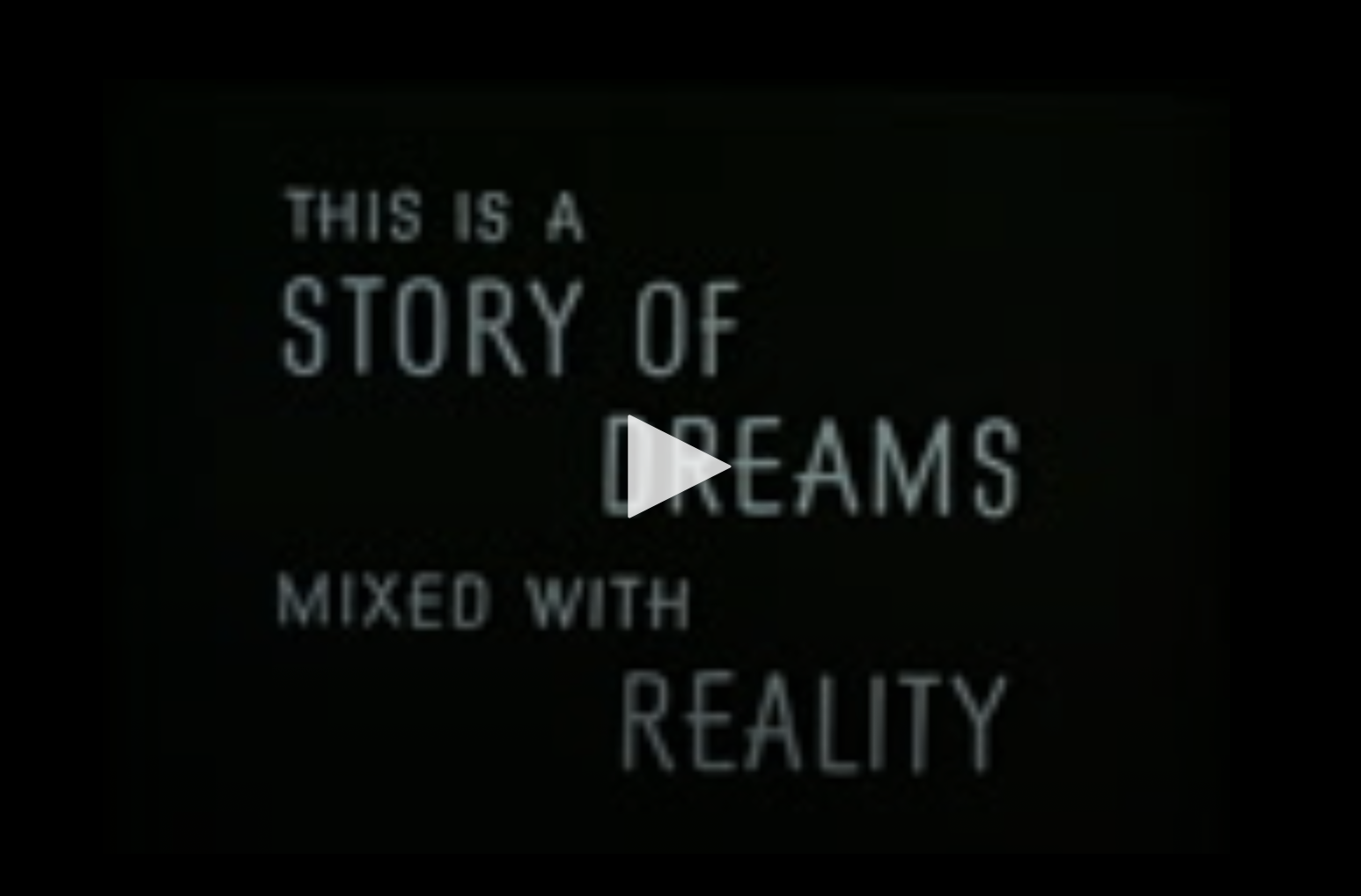
______________
w/ Marcel Duchamp and Jean Cocteau 8 x 8: A Chess Sonata in 8 Movements (1957)
‘Like his earlier Dreams that Money Can Buy, Richter’s 8 x 8 engaged the talents of an array of artists with whom he had associated over the years, including Jean Arp, Jean Cocteau, Yves Tanguy, and Richard Huelsenbeck. The title refers to the 8 x 8 arrangement of squares on a chessboard and the film’s equivalent segmentation into a “Chess Sonata in 8 Movements.” It is a tribute to the game Richter loved: “a game of chance and accident, kings and pawns, retreats and successes—in short, the thousand and one combinations of life.”’ — Film Affinity
the entirety
_____________
Dadascope (1961)
‘Hans Richter’s “Dadascope” is a comprehensive portrait of the Dada movement featuring original poems and prose spoken by their creators: Hans Arp, Marcel Duchamp, Raoul Hausmann, Richard Huelsenbeck, and Kurt Schwitters. Filmed and completed in 1957.’ — Sound Zone Art
the entirety
_____________
From the Circus to the Moon (1963)
‘Short doc on Alexander Calder making mobiles and assemblage in his backyard in France (probably just after he moved there). Richter provides some surrealism with backwards footage and music. Calder also shows off his wire and tin circus performers. Instructive if you think Calder just made abstract mobiles–these are playful works of art.’ — Ted Mills
the entirety
*
p.s. Hey. ** Misanthrope, Theater context rules, I agree. I don’t even like to play games on my phone. My phone is basically a clock with two communication devices inside it. As far as ‘MD’, rausch, rausch! ** Dominik, Hi!!! Yeah, agreed about the Finns. I did like that they kept flashing the word ‘join’ written on their hands and the back of the guitar and stuff. It added this nice fake sinister quality. No, the old film, but now I’m intrigued to see this film with the ‘s’ at the end. I’ll see if I can seek it. Ha ha, if I were a cop I’d say your love’s attempted murder was excusable as self-defense via an understandable case of mistaken identity. Love giving everyone the magical ability to walk on water but, secretly, only for 1 minute and 30 seconds, G. ** _Black_Acrylic, The last film I saw in a theater was that weak-ass recent Gaspar Noe film, but I’m hoping to break the dry spell as soon as tonight. Oh, ‘Tangerine’. I remember being excited about how it was filmed and how the filmmaker maxxed out the possibilities but not so excited about anything else. ** jamie, Hi, J! Thank you a lot, man. Well, me too, re: wanting it to be longer, but I pretty much much used every ‘film grain’ GIF that’s on the web, and that’s far as I could get. I don’t know what is it. I like ‘interlude’. I’m good. I’m still giddy about just being out and about, going to museums and sitting in cafes and the usually normal stuff. Oh, no, shit, about Hannah. Yeah, I think it’s easy to feel like we’re past the whole thing, but we’re not, obviously. That does sound tricky, the home life du jour. I keep imagining one of those old silent films where people keep opening doors and walking through rooms at the split second after someone else has just left the rooms and closed the doors. I hope she gets through the symptoms and infection as quickly as the human body can make happen in the ideal circumstance, and that you and the kiddo stay clean as whistles. Love, me. ** David Ehrenstein, Hi. Thanks. I’m going to try to sit on my hands and wait to see those scenes in the context of the whole film, but the gesture is much appreciated. ** Steve Erickson, Well, you living in the USA can surely understand how absolutely nothing can become a three-day scandal these days thanks to a sadly sizeable portion of humanity having devolved into nosey control freaks with no lives. I can’t remember the last Eurovision winner who went on to be a big or even middling star, even just here in Europe. Bucks Fizz a billion years ago maybe? ** Jack Skelley, Aw, thank you, Jack. Much, much appreciated. xo ** Right. Today I present the beautiful and very influential films of Hans Richter for your hopeful intake. Great work if your senses of curiosity and hungers for inspiring source material are functioning. See you tomorrow.




 Now available in North America
Now available in North America 
Hans Richter wrote a good book called Dada: Art and Anti-Art that I found to be a useful beginner’s guide as a teenager.
Had my 2nd Covid jab just now, and I’ll be guzzling water and paracetamol in the hope that I don’t see any adverse after effects like last time.
Hi!!
Yes, definitely, they put some thought into the details, and I always appreciate that. The Finns, I mean.
Haha, my love is extremely grateful or would be if you were the cop to arrive at the scene first. Hahaha, I can see everyone showing off and then getting drenched while your love laughs his ass off. Love growing his eyebrows together and styling them as a moustache, Od.
Hey Dennis.
Nice Hans Richter Day. I watched a few of the early films and will be dipping in and watching more when I next have time. Would the Rhythms films have been shown with the soundtracks featured here, do you know? I loved all those eyeballs in Filmstudie.
I’m glad you’re enjoying the revived Paris. It sounds so nice and long may it continue. I’m thinking we’ll be living a life more normal in about a week and a half and I’m more than ready for it.
Thanks for your good wishes for Hannah. More than anything, she’s just finding it odd that after all this time and how careful we’ve been she’s got this celebrity virus. And I’ve got another negative Covid test, so I’m thinking/hoping that my vaccination is kicking in. I’ve got a hankering for watching one of those old movies you mentioned, with people leaving and entering rooms, or maybe ten minutes of one.
What are you working on right now, if I may ask? I know you’re always working on something or a few things.
Hope you have a lovely day!
Love to you,
jamie
I bought an advance ticket to see THE AMUSEMENT PARK on Saturday afternoon today – it’s playing in a tiny theater that’s currently only allowing a few people to sit in each row, so that seemed wise.
Eurovision appeals to Americans for its campy excess, but until the last decade, I got the sense that most of the artists were pretty sincere about their aesthetic but coming from a tradition of over-the-top showbiz (which you can also see in K-pop.) From what I’ve perused recently, the self-consciousness levels have increased.
Hans Richter hails from that er a when film was regarded as anther form of painting and sculpture. See also Joseph Cornell
Ross Asshat Heart’sFoucualt Maybe he’s discovered fist-fucking.
And maybe his neofascist peeps ahve done so as well For those of use who remember Foucault , and Herve Guibert’s account of his death in “To th e Freind who WouldNot save my life this is all exceptionally curious
That bobbing eyeball image is so great. Will check out more of the clips.
Peter Brook’s Vietnam war pseudo-doc “Tell Me Lies” recently showed up on worldscinema.org. Not all of it dates well of course, but there’s plenty to enjoy. And those musical numbers!
Bill
Hi, Dennis!
Trippy Richter gifs! Sorry for the late reply. We came back from our little holiday, which was amazing. We even ate mushrooms. I read recently ‘The Wild Kindness’ (which I found out about here, of course) and I was hoping they spoke to me. They didn’t, but still it was beautiful. How are you? Are you enjoying the two extra hours before curfew? Hope you’re making the most of it. Yeah, your restrictions sound overly cautious. Here you have to wait quite a lot too for the second shot. Xet just got vaxed today. Just one shot apparently because he already had covid last October. We both caught it. The good thing is it was mild in both cases. I think my age group starts getting vaxed next week. Thanks for your kind words about Xet’s loss. Yes, parents dying is awful. Let’s hope we can make it to Paris in the fall. That would be a total blast. Awesome Alberto García-Alix post! He’s great. I’m so glad you like him. I need to see the documentary. I didn’t know about it. Thank you! Oh, I can’t wait to listen to this week’s Wake Island! Lots of love,